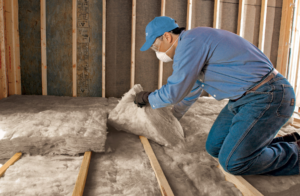SEO is optimizing a website or web page for search engines. It involves researching keywords, creating content, link building, and more. It is a long-term strategy that requires consistent work to see results.
The key to effective SEO is understanding how Google reads your webpage. The first place that search engines look is in the title tag and URL slug. Click https://www.rankboss.com/ to learn more.

Identifying the right keywords to target is crucial in any SEO strategy. It allows you to scope out trends and blind spots, understand user intent, and find the optimal keywords for your content. You can use a variety of tools to do this research, including free ones such as Google Trends and search volume data. Ideally, you want to find search terms that have high relevance and match your business’s products or services. Additionally, you should consider using a keyword gap analysis, which can help you identify keywords that your competitors are ranking for but you’re not.
In addition to identifying keyword opportunities, SEO research can also help you create better content. By understanding user intent, you can optimize your content to better answer users’ questions and solve their problems. This will improve the quality of your content, which can help you rank higher on SERPs.
There are several ways to conduct keyword research, from the traditional spreadsheet to automated tools such as Ahrefs. Some of these tools can even suggest related search terms based on your existing list. But don’t forget that it’s not just about the keywords themselves – it’s about what those words mean to your audience and whether or not they align with your business goals.
Start by putting yourself in your audience’s shoes. What queries would they enter into a search engine? Then, brainstorm keyword ideas around those phrases. You can also look at your competitors’ top-performing pages for inspiration.
Once you have a list of potential keywords, review them to ensure that they’re accurate and relevant. Then, run them through a tool to get more precise details, such as their competition level and average search volume. Once you’ve done this, prioritize the most competitive keywords.
Another good way to find keyword ideas is to look at the autocomplete predictions that appear when you type a phrase into Google. For example, if you enter “wedding cake” into Google, you’ll see suggestions such as “wedding cakes for kids” and “wedding cake ideas.” These suggestions show what people are searching for, so it’s important to take them into account when conducting keyword research.
Content creation
Content creation is a crucial step in the SEO process. It involves creating quality content centered around a specific keyword. It also includes writing compelling copy and implementing other elements to increase the chances of a high search engine ranking. However, it’s important to remember that not all keywords are created equal. Some have a greater business value than others, so you should prioritize those.
The first step in creating SEO-friendly content is figuring out what your audience is looking for. This can be done by conducting keyword research or examining your competitors’ pages. Once you have a clear understanding of what your audience wants, it’s time to create your content.
A content brief outlines the specifics of what you want to produce. It should include a description of the goal, the audience, and proper messaging. It can also include a list of keywords and their scoring. Semrush’s keyword strategy builder is a great tool for creating these briefs. It will automatically generate topic clusters based on your seed keywords, which can be used to create content that is relevant to those keywords.
When a novel, complex, or frustrating problem arises, people typically scour the web for solutions. As a result, it’s important to position yourself as the leading solution in these scenarios. In order to do so, you must create SEO content that addresses the pain points and questions of your target audience.
The next step in content creation is deciding what form you want your content to take. Some ideas are best expressed visually and may require an infographic or video. Others are better suited for plain text and can be published as an article or blog post.
The best SEOs know the value of high-quality content. Unfortunately, many misconceptions exist about the relationship between SEO and content marketing. This is unfortunate, as it’s important for content marketers to work with SEOs to ensure their websites are optimized for search. This is possible when the content, web, and design teams work together from the beginning of a project. This will lead to more impactful content that will help the brand achieve its business goals.
Link building
Link building is the process of getting other websites to link to yours. It is an important part of search engine optimization (SEO) because it helps to improve your website’s ranking in SERPs. However, there are a few things you should keep in mind when it comes to link building. First, it’s important to understand what kind of links are best for your website. In general, inbound links are more beneficial than outbound links.
In order to get inbound links, you should try to build relationships with people in your industry. This can be done through social media, conferences, and other networking events. This will help to build a brand and reputation, which in turn can lead to more inbound links.
It is also a good idea to find out what your audience’s needs are and what kinds of content they would be interested in reading. This will help you to create high-quality, relevant content that will attract attention and attract more links. You can also use this information to create a marketing campaign that will target your audience.
Another way to build links is by participating in online communities, such as forums and Q&A sites. However, be careful not to engage in link-building tactics that are considered spammy by Google. This includes buying links and other manipulative tactics, which are referred to as black-hat SEO. These techniques are not recommended by Google and can damage your ranking in SERPs.
While a proper link-building strategy can take some time, it is essential for any business looking to grow its search engine ranking. While there are many different ways to build links, the most effective method is to focus on quality, rather than quantity. This will ensure that you have the highest-quality backlinks and will increase your chances of ranking well on search engines. Additionally, a small website with no links is like a tree without branches; it’s not going anywhere. In addition to this, you should be patient and avoid shortcuts like buying links, which are against Google’s guidelines and can be damaging to your site.
Analytics
SEO, at its core, relies on data. A comprehensive analysis of a site’s performance can reveal the strengths to capitalize on, as well as weaknesses to correct. It can also pinpoint obstacles preventing your business from reaching its goals. This information can help you optimize your content for user intent, as well as make the necessary changes to improve your search engine ranking.
The right tools can help you understand your site’s SEO, including the keywords that drive traffic and the user intent behind those searches. These tools can also identify potential technical issues that need to be addressed to strengthen your website’s SEO, such as poor URL structure or broken links. By identifying these challenges, you can implement a more effective SEO strategy that will lead to improved search engine rankings and organic conversions.
Using an automated reporting tool, such as DashThis, can save you valuable time. These tools can automatically pull the analytics from multiple SEO tools, and provide you with a single report that’s easy to read and understand. Moreover, these tools can also provide you with goal widgets that let you track your SEO objectives.
While SEO analytics is a powerful tool, it should not be seen as a guarantee for immediate results. A successful SEO strategy requires patience and perseverance. With a clear understanding of what SEO analytics is and what it’s not, you can leverage this information to achieve more sustainable results.
While traffic and keyword ranking are key components of SEO, it’s important to consider other aspects of your digital marketing campaign, including PPC campaigns, to get a holistic view of your business’s performance. By focusing on a holistic approach, you’ll be able to increase your brand visibility and build long-term relationships with your clients. Additionally, you’ll be able to provide your clients with more value and ultimately save time and money.




